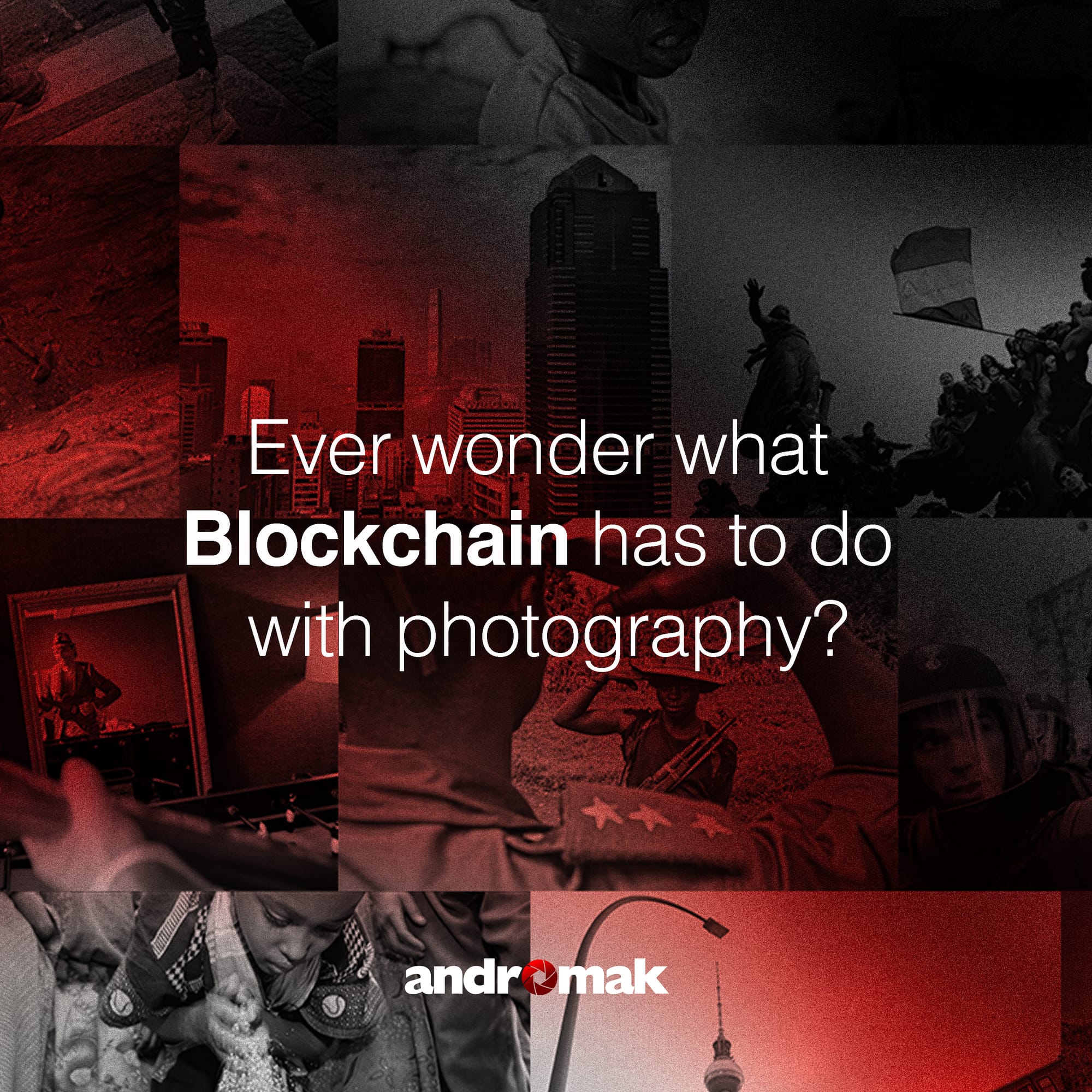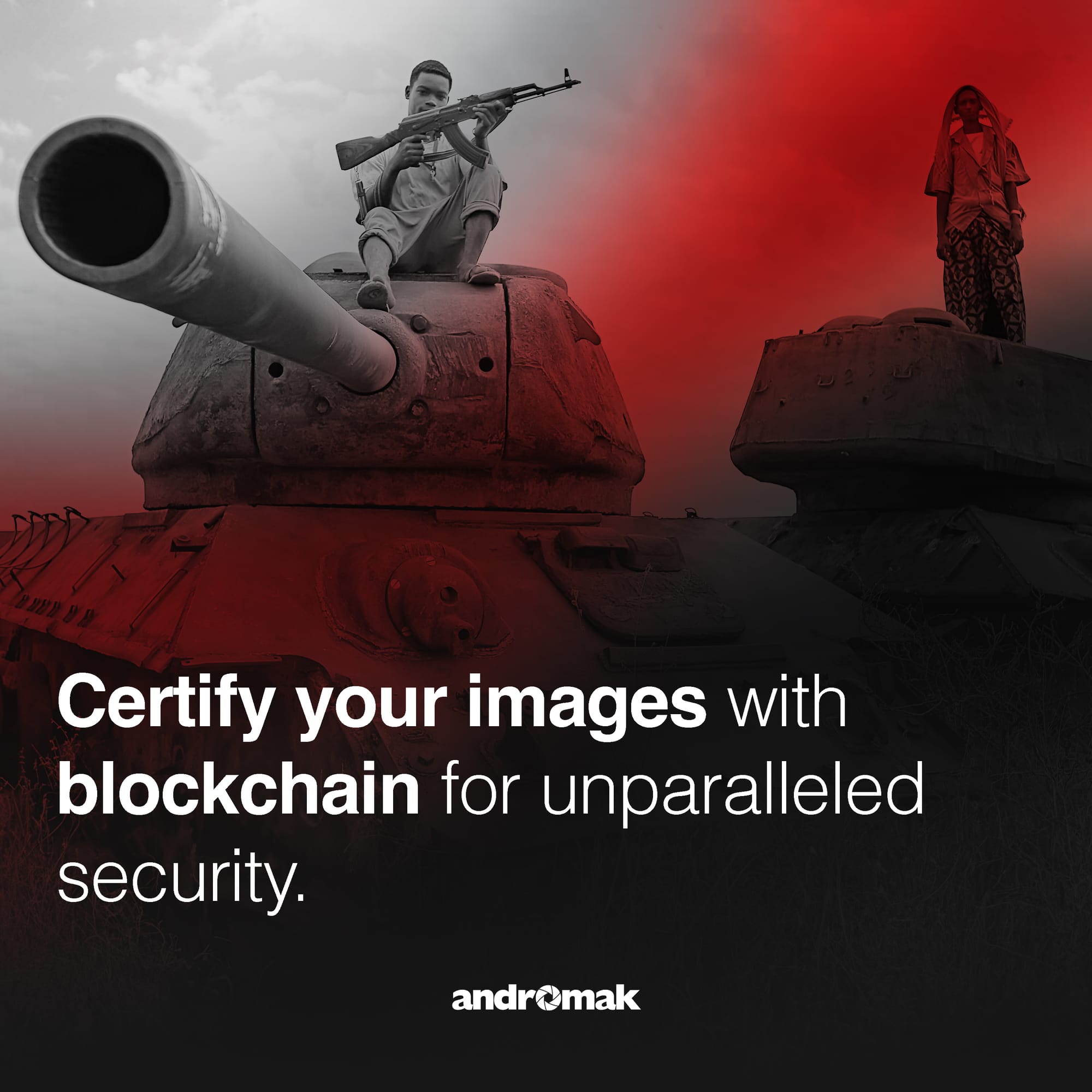As digital photography becomes increasingly prevalent, ensuring the authenticity and ownership of images has become a major concern for photographers. Blockchain technology offers a robust solution to these issues by providing a secure and verifiable method for certifying images. This article explores the concept of blockchain certifications for images, discusses the benefits of this technology, and examines how platforms like Andromak are leveraging blockchain to protect photographers' rights and enhance their credibility.

In the fast-paced digital world, where images are shared and reproduced with unprecedented ease, photographers face significant challenges in protecting their intellectual property and ensuring the authenticity of their work. Traditional methods of copyright protection and watermarking have their limitations. Enter blockchain technology—a game-changer in the realm of digital rights management. This article delves into how blockchain certifications for images work, the myriad benefits they offer, and how Andromak is at the forefront of utilizing this technology to empower photographers.
Understanding Blockchain Technology
Blockchain is a decentralized digital ledger that records transactions across multiple computers in such a way that the registered transactions cannot be altered retroactively. This technology is the backbone of cryptocurrencies like Bitcoin, but its applications extend far beyond digital currency. One of the most promising uses of blockchain is in verifying the authenticity and ownership of digital assets, including photographs.
How Blockchain Works
At its core, a blockchain consists of a series of blocks, each containing a list of transactions. Each block has a unique identifier known as a hash, and it also includes the hash of the previous block, creating a chain of blocks (hence the name "blockchain"). This structure makes it extremely difficult for any single entity to alter any part of the blockchain without altering all subsequent blocks, which would require consensus from the network.
Blockchain in Digital Certification
When a digital image is certified on the blockchain, a unique digital signature (hash) of the image is created and stored on the blockchain. This digital signature can be used to verify the image's authenticity and ownership at any time, providing a permanent, tamper-proof record.

The Benefits of Blockchain Certifications for Images
Security and Tamper-Proof Authenticity
One of the most significant benefits of blockchain technology is its security. Once an image is certified on the blockchain, it is virtually impossible to alter the certification without detection. This provides photographers with a reliable way to prove the authenticity of their images, protecting their work from being copied or misused without permission.
Proof of Ownership
Blockchain certifications provide indisputable proof of ownership. Each image certification includes a timestamp, showing when the image was first registered on the blockchain. This can be crucial in legal disputes over image ownership and rights, as it provides a clear record of who owns the image and when it was created.
Enhanced Credibility and Trust
Using blockchain to certify images can enhance a photographer's credibility. Clients and buyers can easily verify the authenticity and ownership of an image, increasing their confidence in the purchase. This can be particularly beneficial for professional photographers who sell their work online or through galleries.
Streamlined Licensing and Royalties
Blockchain technology can also streamline the process of licensing images and collecting royalties. Smart contracts—self-executing contracts with the terms of the agreement directly written into code—can be used to automate these processes. When an image is licensed, the smart contract can automatically execute the terms, ensuring that the photographer is paid fairly and promptly.

Andromak's Use of Blockchain for Image Certification
Andromak is leveraging blockchain technology to provide photographers with a robust and user-friendly platform for certifying their images. Here’s how Andromak’s blockchain certification works and the benefits it offers to photographers.
The Certification Process
On Andromak, photographers can easily certify their images by uploading them to the platform. Andromak generates a unique digital signature for each image and records it on the blockchain. The photographer receives a digital certificate containing the image's blockchain record and a QR code that can be used to verify the certification.
Real-Time Verification
One of the standout features of Andromak’s blockchain certification is real-time verification. Clients, buyers, or anyone interested can scan the QR code associated with an image to instantly verify its authenticity and ownership. This transparency builds trust and adds value to the photographer’s work.
Integration with Legal Frameworks
Andromak’s blockchain certifications are designed to be legally robust. The platform’s certifications are recognized and can be used in legal disputes to prove ownership and authenticity. This integration with legal frameworks ensures that photographers have a strong foundation for protecting their rights.

Case Studies and Applications
To illustrate the impact of blockchain certifications, consider the following case studies and applications:
Case Study: A Professional Photographer
A professional photographer named Alex frequently sells his work online and through art galleries. Before using blockchain certifications, Alex often struggled with unauthorized use of his images. Clients were sometimes hesitant to purchase his work due to concerns about authenticity.
After certifying his images on Andromak, Alex noticed a significant improvement. The blockchain certifications provided his clients with an easy way to verify the authenticity of his images, increasing their confidence in their purchases. As a result, Alex saw an increase in sales and was able to command higher prices for his certified works.
Application: Stock Photography
In the stock photography industry, ensuring the authenticity and ownership of images is crucial. Photographers often face challenges with unauthorized use and difficulty in proving ownership. Blockchain certifications can address these issues by providing a clear, tamper-proof record of each image’s origin.
Stock photography platforms can integrate blockchain certifications to enhance the value they offer to photographers and buyers. Photographers can certify their images on the platform, providing buyers with a straightforward way to verify the authenticity and ownership of the images they purchase.
Challenges and Future Directions
While blockchain certifications offer numerous benefits, there are also challenges and considerations to keep in mind.
Cost and Accessibility
One challenge is the cost associated with using blockchain technology. While platforms like Andromak aim to make this process affordable, the cost can still be a barrier for some photographers. Ensuring that blockchain certifications are accessible to photographers of all levels is crucial for widespread adoption.
Education and Awareness
Another challenge is education and awareness. Many photographers may not be familiar with blockchain technology and how it can benefit them. Platforms like Andromak need to invest in educating photographers about the advantages of blockchain certifications and how to use the technology effectively.
Scalability
As the use of blockchain technology grows, scalability can become an issue. Ensuring that the blockchain can handle a large number of transactions without compromising speed or security is essential for its continued success in the digital certification space.
Future Directions
Looking ahead, the future of blockchain certifications for images is promising. Advancements in blockchain technology, such as improved scalability and reduced costs, will make it even more accessible and effective for photographers. Additionally, increased collaboration between blockchain platforms and legal frameworks will further enhance the robustness and recognition of blockchain certifications.

Blockchain technology is revolutionizing the way photographers protect their work, providing a secure, tamper-proof method for certifying images. By offering indisputable proof of ownership and authenticity, blockchain certifications enhance a photographer’s credibility, streamline licensing and royalties, and safeguard against unauthorized use.
Platforms like Andromak are leading the way in utilizing blockchain technology to empower photographers. Through features like real-time verification and integration with legal frameworks, Andromak provides photographers with the tools they need to protect their intellectual property and ensure their work is recognized and valued.
As the digital landscape continues to evolve, embracing blockchain technology for image certification is a forward-thinking move for photographers. By leveraging these advancements, photographers can secure their work, build trust with clients and buyers, and navigate the digital world with confidence.

References
- "What is Blockchain Technology?" Investopedia. [Source](https://www.investopedia.com/terms/b/blockchain.asp)
- "Blockchain for Art: The Use Case for Blockchain in the Art Market." Artory. [Source](https://www.artory.com/articles/blockchain-for-art/)
- "How Blockchain Can Protect Digital Content and Fight Fake News." Forbes. [Source](https://www.forbes.com/sites/forbestechcouncil/2020/12/01/how-blockchain-can-protect-digital-content-and-fight-fake-news/)





